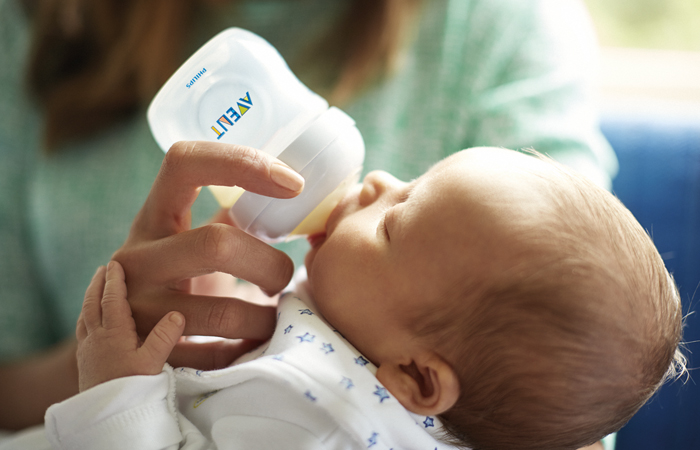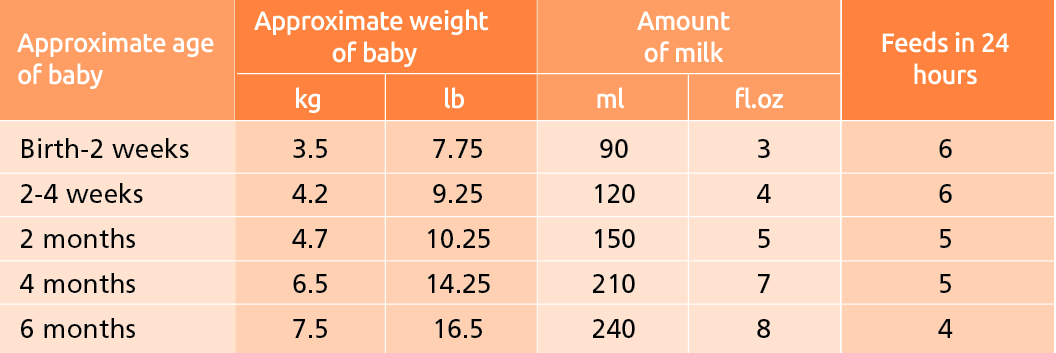0-6 months

2. Bottle feeding
In 0-6 months
Bookmark
Record learning outcomes
If a parent chooses to bottle feed their baby, there is plenty of advice that can be provided, from how best to feed the baby to how much milk they should be drinking

 Top tips for bottle feeding
Top tips for bottle feeding
- Feed the baby in a calm, relaxed atmosphere that is at a comfortable temperature
- Hold the baby fairly upright with his/her head supported so that he/she can breathe and swallow easily and comfortably
- Make eye contact, chat and smile at the baby during a feed as this makes it more enjoyable for the baby and encourages successful bonding
- Keep the teat full of milk at all times so that the baby is not taking in air
- As with breastfeeding, swap sides halfway through the feed. This helps the baby’s eyes and neck to develop equally and also means that they won’t develop a ‘favourite’ side
- If the baby becomes unsettled during a feed then they may have wind – see When breast milk isn't an option
- For mums who have had a caesarean, holding their babies under their arms or in a ‘rugby ball’ hold can be more comfortable. A pillow across the lap can also help to support the baby
- Don’t lay the baby flat on his/her back as this can allow milk to flow into the nose or Eustachian tube, leading to ear infections. Babies should also not be fed while propped up in a chair with cushions or pillows.
Example on-pack feeding guide*
Each infant formula milk comes with guidelines on how much to give based on the age and weight of the baby. The following table provides a general guide, but it should be noted that it does NOT apply to premature babies or babies with a low birthweight.

N.B. This table is only a guide – babies may need more or less than the amounts stated and should be fed on demand. Newborn babies may only take small amounts of infant formula to start with.
*Powder weights vary by brand, so always check the instructions on-pack.
